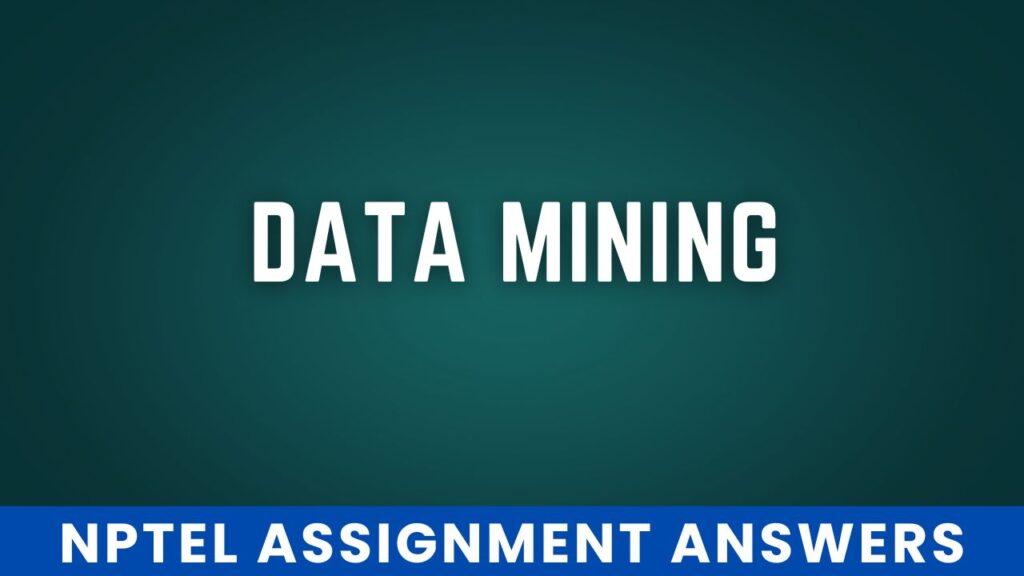NPTEL Introduction to Database Systems Week 1 Assignment Answers 2025
1. Which of the following statements is incorrect regarding databases?
- It captures information about a real-world enterprise or part of an enterprise.
- It is maintained to serve specific data management needs of an enterprise.
- Activities of the enterprise are supported by the database and continually update the database.
- It is difficult to access the data stored in a database. Complex queries have to be written to get even simple data.
Answer :- or Answer Click Here
2. Which of the following statements is incorrect regarding functionalities of databases?
- Allows for a standard method of data retrieval through queries.
- Queries are returned efficiently.
- Doesn’t have facilities to provide data backup. In case of a failure, all data is lost.
- Allows for a large number of concurrent users with minimal drop-off in performance
Answer :-
3. Which of the following statements best describes a Physical Data Model?
- It is a high-level description of informational needs underlying the design of a database
- It is used to represent only the logical part of the database
- It is a data model explaining the schema of the database
- It is a description of the database giving details about record formats, file structures etc.
Answer :-
4. Which of the following is true about an ER model?
- It consists of the various tables and links among them in the domain being modeled along with operations to be performed on data.
- It consists of the various tables and links among them in the domain being modeled.
- It consists of the various entity types of interest and the relationships among them in the domain being modeled.
- It consists of the various entity types of interest and the relationships among them in the domain being modeled along with operations to be performed on data.
Answer :-
5. Consider the following sets
M = { p: Recovery Manager; q: Transaction Manager; r: Buffer Manager; s: RDBMS Run-time System}
F = { w: Transaction Error Handling; x: Concurrency Control; y: Query Execution; z: Paging}
What is the most appropriate matching between sets M and F?
- p — w; q — x; r — z; s — y;
- p — z; q — w; r — y; s — x;
- p — w; q — z; r — x; s — y;
- p — z; q — w; r — z; s — y;
Answer :-
6. Which of the following best describes the conventional role of a Data Analyst
- Person who uses embedded SQL in a high-level language and develops programs to handle functional requirements of an information system.
- Person who designs the logical scheme of a database system.
- Person who uses SQL to generate answers for complex queries.
- Person who monitors usage and creates necessary index structures to speed up query execution.
Answer :- or Answer Click Here
7. Consider the following statements:
S1: A view usually provides access to a part of the data relevant to a group of users.
S2: A view usually provides access to the complete database.
S3: Naive users require a deep understanding of an information system to use it.
S4: Naive users do not require a deep understanding of an information system to use it.
Choose the correct option:
- S1 and S3 are TRUE
- S1 and S4 are TRUE
- S2 and S3 are TRUE
- S2 and S4 are TRUE
Answer :-
8. The ability to modify physical-level schema without affecting the logical-level/view-level schema is called:
- Logical Data Independence
- View Data Independence
- Physical Data Independence
- Application Data Independence
Answer :-
9. Requirements collection is the first step while creating a database system.
- True
- False
Answer :-
10. Application programmers don’t need a complete understanding of the database schema or views.
- True
- False
Answer :- or Answer Click Here
11. Indexes are added to databases to speed up query execution.
- True
- False
Answer :-
12. OS file systems have the advantage of allowing concurrent users, while compared to a RDBMS system.
- True
- False
Answer :-
13. Which of the following are generally stored in the disk storage of an RDBMS system?
- View Definitions.
- Index Structures.
- Database Log.
- User cookies.
Answers :- For Answer Click Here


